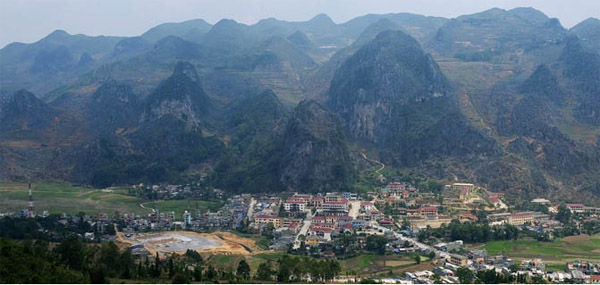
Dong Van Town is located in the middle of valley surrounded by rocks. In the morning, picture of old quarter is blended two colors: bright yellow of the sunshine and gray of ancient houses. The quarter is formed form the early 20th century, only has a few families of the H’mong, Tay and Chinese, gradually, more and more other local residents find it. Overall, old quarter has Chinese’s architecture with two-story houses of yin and yang roofs, red lantem…

From above looking down, next to three markets arranged in U-shape with yin and yang roofs are two ancient streets that lead to the mountain. A mainly residential area of the Tay and dozens of ancient houses is concerned as the important part of Dong Van old quarter. According to documents from a workshop about Dong Van old quarter, there have about 40 ancient houses with 100 years old. Especially, there has a house nearly 200 years old of Mr. Luong Huy Ngo, built in 1860. The common architecture here is the two-story house and yin and yang roofs.

Dong Van market area has tubular ancient houses to use advantages as Hanoi old quarter. From 2006, Dong Van district held “night in old quater” in March on 14, 15, 16 lunar calendar. All households in the old quarter hang red lanterns, display ethnic brocade, and sell traditional food. “Night in old quarter” in Dong Van karst plateau is also working for propagation to attract tourists.
Tourists can learn more about culture of ethnic people through local people and soak into dance of the Lo Lo, enjoy traditional dishes such as: Thang Co, Men Men, Ta Chua, of the H’Mong and visit the area display local produce. Dong Van old quarter is an ideal destination in the North of Vietnam, which preserves the tradition and cultural intangible values of ethnic people.





